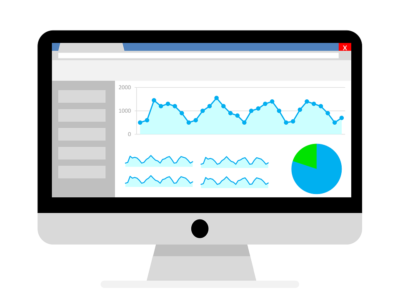Mobile App Analytics (PART 1)
- Mobile
Mobile App Analytics (PART 1)
- How their mobile app is performing?
- How to get to more and more new users while managing current user?
- Where they are lacking in the app?
- What experience is the app creating for the end users?
- How they can take their application to the next level in this competition?
- What features of the app are attracting user and which features need to be revised?
- Crashes:
The app falls over or at least doesn’t work right. - Bad User Experience:
The user can’t find how to do something, or has to do a lot of hard work to achieve a desired result.

-
- Counting Installations:
One of the first and simplest acquisition metrics, is measured by the app marketplaces.
- Active and New Users:
Well, anyone can download and install your app, but the point will be how many of them are used by user regularly. The active and new user metrics collect such data at run‐time directly through all running app instances worldwide.
- User Engagement:
User engagement measures how often the users are active within your app and how much time they do spend working with your app’s features.
- User Sessions:
A user session is defined as the time period of use of your app by an individual, i.e. time between when the user started the app and ended the app by suspending to the background or closing the app.
- Retention and Churn:
The retention rate calculates the chance of a user who keeps your app for a defined period of time. But, the Churn represents the opposite of retention rate. It is the measure of users who will stop using your app in a defined period of time.
- Lifetime Value (LTV):
The lifetime value (LTV) is the driving metric for evaluating how much your users are worth in terms of financial revenue, loyalty, and evangelism (users who are actively sharing and recommending your app) while they are engaged with your app.
- Personas:
The basic idea behind this metric is to create representative focus groups within your audience by mapping specific metric characteristics, such as age, gender, geographic locations, country information, and interests. Creation and classification of your users into digital personas in such a manner will give you a deeper understanding about the demands, preferences and interests of your audience/users.
- App Crashes:
The most important metric from developer point of view regarding app users, usability and reliability of app depend largely on issues and problems related with app crashes.
- App Performance:
Slow application response is much more annoying for users. Mobile application development relies heavily on asynchronous tasks that should not directly block the interaction between the user and an app. Effective and efficient app design means reducing users’ waiting times to a bare minimum for information or where waiting is unavoidable, or distracting the user while loading necessary pieces of information in the background.
- Counting Installations:
-
-
Flurry (Yahoo Mobile Development Suite) :
Platforms Supported : iOS and Android.
Cost : Free
Feature Page : https://developer.yahoo.com/analytics/features.html
-
Platforms Supported : iOS and Android.
Cost : Free
Feature Page: https://www.google.com/analytics/analytics/features/
-
Platforms Supported : iOS.
Cost : Free
Feature Page : https://developer.apple.com/app-store/app-analytics/
-
Apsalar :
Platforms Supported : Android and iOS.
Cost : Both Free and Premium
Feature Page: http://support.apsalar.com/customer/portal/articles/1305106-analytics-attribution-and-integration-glossary
-
Mixpanel :
Platforms Supported : Javascript, iOS, Android and Java.
Cost : Both Free and Premium
Feature Page : https://mixpanel.com/
-
Platforms Supported : iOS, Android and Windows.
Cost : Both Free and Premium
Feature Page : https://amplitude.zendesk.com/hc/en-us/sections/206493547-Features
-
Countly :
Platforms Supported : iOS, Android, Windows, React Native, Hybrid Platforms.
Cost : Both Free and Premium
Feature Page : https://count.ly/features/
-
Appsee :
Platforms Supported : iOS, Android, React Native, Hybrid Platforms.
Cost : Premium
Feature Page : https://www.appsee.com/features
-
Platforms Supported : iOS, Android and Windows.
Cost : Both Free and Premium
Feature Page : https://www.localytics.com/features/analytics/
-
Related content
Auriga: Leveling Up for Enterprise Growth!
Auriga’s journey began in 2010 crafting products for India’s
